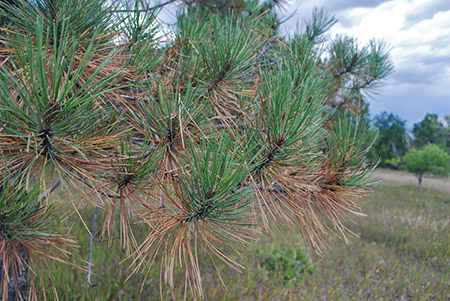 FORT COLLINS, Colo. — Although thousands of evergreen trees in Colorado’s high country, foothills and communities are beginning to display dying yellow or brown needles, most are simply going through a natural shedding process — and are not being damaged by bark beetles or any specific tree insect or disease.
FORT COLLINS, Colo. — Although thousands of evergreen trees in Colorado’s high country, foothills and communities are beginning to display dying yellow or brown needles, most are simply going through a natural shedding process — and are not being damaged by bark beetles or any specific tree insect or disease.
Colorado evergreens shed their older, interior needles as part of an annual growth cycle.
Needles on the lower portions of the crown or closest to the trunk are most commonly shed, but trees stressed due to drought or root damage may shed more needles to keep the tree in balance with its root system.
Soon-to-be shed needles typically yellow first, then turn a reddish-orange or brown color before dropping off.
In Colorado, ponderosa and lodgepole pines, as well as some spruce and fir species, are the trees that are most commonly reported to be shedding needles in September and October.
This fall needle drop is frequently mislabeled as “needle cast,” but that term actually refers to a fungal disease of spruce and fir trees.
Conifers dying from insect or disease impacts will typically exhibit a fading or dying of all the needles around the tree, as opposed to only the older needles. The Colorado State Forest Service (CSFS) wants landowners to know that there is no need to spray or otherwise chemically treat pines and other evergreens exhibiting normal fall needle drop.
For more information about tree and forest health, go the CSFS’ Forest Health & Management web pages.

